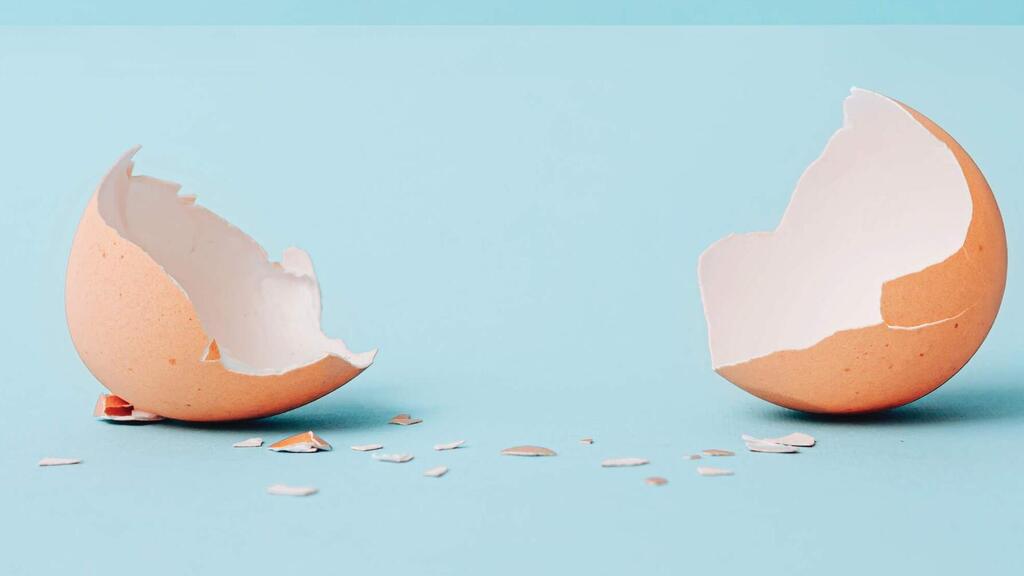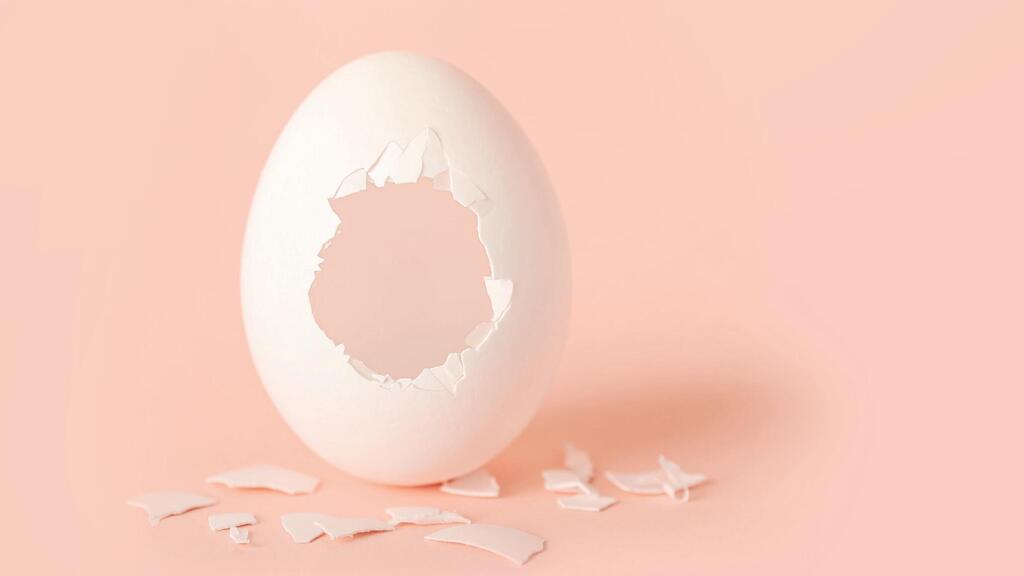Getting your Trinity Audio player ready...
With bread and its many variations off the menu during Passover, most Israelis turn to a diet of matzah, vegetables, meat—and eggs. Lots of eggs. And now, a surprising trend is gaining traction on social media: people are eating the part of the egg that’s almost always thrown away—the shell.
Even during the toughest austerity periods in Israel’s history, no one thought to eat eggshells. Could it be that for years we’ve been discarding the healthiest part of the egg?
Lili, 69, from central Israel (full name withheld), began consuming eggshells after fracturing her sternum in a car accident. Due to her age, doctors warned her the healing process would be slow. But Lili remembered once reading that eggshells are a rich source of calcium. Her method was simple: she soaked a whole egg in natural lemon juice until the calcium from the shell dissolved into the liquid.
Then she drank the calcium-infused lemon juice with a bit of water. The egg itself could still be used. After following this routine daily, she returned for a check-up—and doctors were stunned by the unexpectedly fast healing of her bone.
As strange as it may sound, this home remedy isn’t entirely baseless. A number of scientific studies have investigated the potential health benefits of consuming eggshells. “You don’t need to eat eggshells to live a long and healthy life,” says Guy Shalmon, a clinical dietitian and physiologist from the Department of Nutritional Sciences at Tel-Hai College.
“But they do offer benefits. Ground eggshells—sold as eggshell powder—are rich in various minerals, primarily calcium, but also phosphorus, magnesium, and trace amounts of sodium, potassium, zinc, manganese, iron, and copper. The rest of the shell is made up of proteins that bind the minerals into a geometric structure, giving the shell its strength.”
What the science says
A landmark study published in 2002 in the British Journal of Nutrition reported surprising results. The randomized, double-blind, placebo-controlled study—considered highly reliable—tracked 85 healthy women aged 50–70 who were at least five years post-menopause, a stage when bone density typically declines. The participants did not suffer from osteoporosis or other diseases and were not taking medications.
They were divided into three groups:
- One group received eggshell powder containing about 1,000 mg of calcium per day.
- Another took the same amount of calcium as calcium carbonate supplements.
- A control group received a placebo (a protein powder with no significant nutritional value).
Each participant took their supplement twice daily—500 mg in the morning and 500 mg in the evening. Throughout the year-long study, they underwent bone density scans of the lower spine, femoral neck, and upper thigh, along with blood tests to measure calcium levels and markers of bone metabolism.
Findings: The group consuming eggshell powder showed a 1.75% increase in bone density. The calcium supplement group had a 1.16% increase. The placebo group experienced a 0.6% decrease in bone density.
Researchers’ conclusions: While the exact reason remains unclear, scientists suggested that eggshells may contain another compound—strontium—which is known to aid calcium absorption and support bone formation. Previous studies on strontium showed little effect, but those studies used very small doses. Eggshells contain strontium at concentrations up to 400 times higher than in those studies. Researchers concluded that eggshell consumption likely boosts bone mass but emphasized the need for more research.
The hidden value of the eggshell membrane
Anyone who’s struggled to peel a hard-boiled egg knows about the thin membrane between the shell and the egg white. While it may be frustrating, that layer is a nutritional gem. “The membrane contains collagen protein, chondroitin sulfate, glucosamine, and other nutrients,” says Shalmon. Clinical studies suggest that supplements made from this membrane—often called NEM—may help relieve joint pain and stiffness caused by osteoarthritis, although more research is needed.
But what about salmonella?
One real concern is bacterial contamination—eggshells can carry salmonella. A 2018 study published in Maternal & Child Nutrition recommended boiling eggshells for at least 15 minutes to eliminate any harmful bacteria. One method is to hard-boil the egg for 10 minutes, remove the egg, and then boil the empty shell for an additional 20 minutes. Importantly, boiling does not degrade the calcium in the shell.
Get the Ynetnews app on your smartphone: Google Play: https://bit.ly/4eJ37pE | Apple App Store: https://bit.ly/3ZL7iNv
Just half an eggshell can meet your daily calcium needs
The outer coating of the eggshell, known as the cuticle, is a thin, water-insoluble layer mostly made of glycoproteins. “Nutritionally, the shell is a rich source of calcium carbonate,” Shalmon explains. “Each gram of shell contains about 380–400 mg of calcium. A full shell contains roughly 2,000–2,200 mg of calcium—so half a shell provides about 1,000 mg, the daily requirement for most adults.”
How to consume it: infusion or powder
Eating eggshells as-is is risky because they’re sharp and can damage the esophagus. A 2013 study in the International Journal of Food Sciences and Nutrition recommended two methods:
1. Infusion: Soak a whole egg in 120 ml of lemon juice for 48 hours until the shell dissolves and calcium transfers to the liquid. Drink the lemon juice (about half a shell's worth of calcium = 1,000 mg). The egg itself can be used, although its shell will be very thin and fragile after soaking.
2. Powder: Grind clean, boiled shells into a fine powder using a spice grinder or rolling pin. Sift through a fine strainer to remove larger pieces. The powder can be added to foods like bread or pizza without affecting flavor or texture.
A cheap, eco-friendly source of calcium
A 2021 review in the journal Foods concluded that calcium from eggshells is efficient, inexpensive, and environmentally friendly—especially important as the global population ages and osteoporosis rates climb. With growing concern over food waste, repurposing eggshells may offer a sustainable solution, particularly in developing countries where supplements are less accessible.
But don’t overdo it
“Eggshells are calcium-rich, but too much calcium isn’t a good thing,” warns Shalmon. “A full eggshell contains about 2 grams of calcium—double the recommended daily intake.” Excess calcium over weeks or months can cause calcium buildup in soft tissues, hypercalcemia, or even kidney failure. For those already taking calcium or multivitamin supplements, it’s important to consult a clinical dietitian to ensure safe daily intake levels when using eggshell powder.
So how much calcium do we actually need?
According to the DRI (Dietary Reference Intakes):
Adults 19–50: 1,000 mg/day
Adults 51 and older: 1,200 mg/day
Teens (9–18): 1,300 mg/day
Note: Without dairy, the average Israeli diet supplies only about 250–300 mg of calcium per day from sources like bread, vegetables, and water.
Guy Shalmon is a clinical dietitian and physiologist, at the Department of Nutritional Sciences, Tel-Hai College




